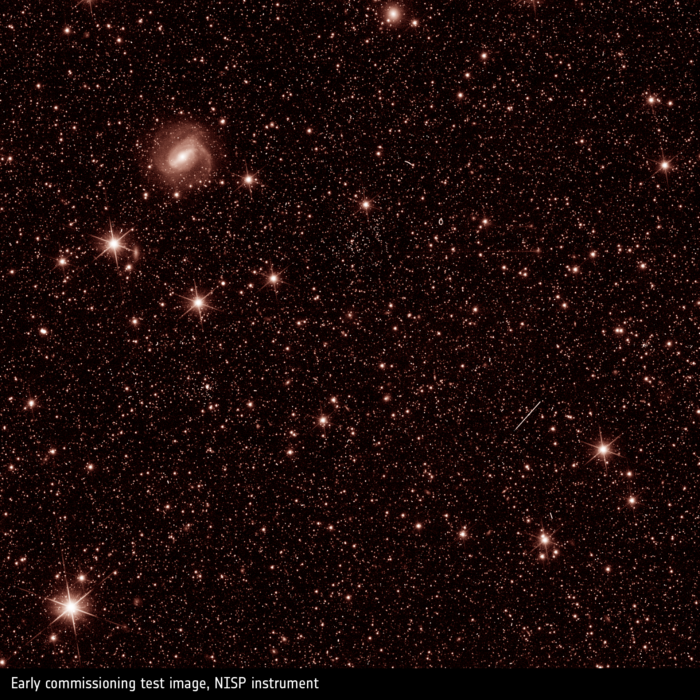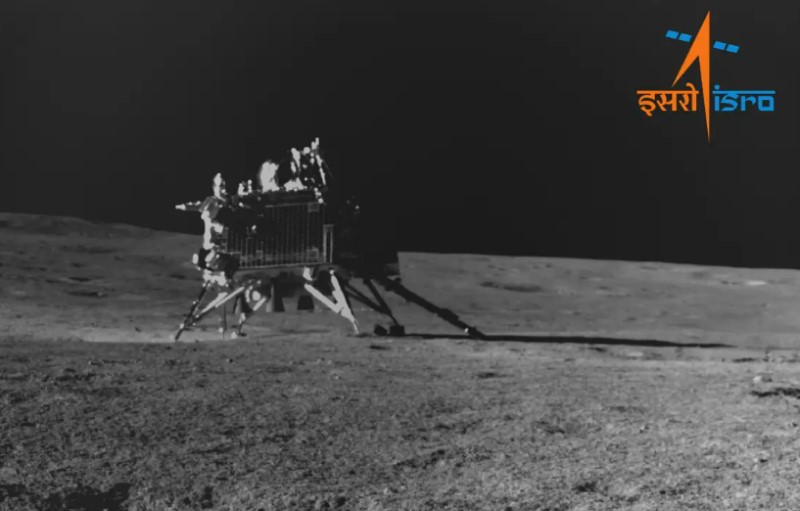The Euclid space telescope was launched in July and it has a groundbreaking mission.
A dark groundbreaking mission!
Built by the European Space Agency (ESA), it will use a combination of visible light and infrared sensors to peer deep (around 10 billion years) into the history of our universe.
Eventually, astronomers hope to build the largest map of the universe yet. The final product will cover about one-third of space, or around two billion galaxies. Incredible!
But above all, Euclid is on a quest to unravel the universe's greatest mystery.
The mystery of dark matter and dark energy!
It released its first test image last week, and researchers are thrilled. It took about 11 years of work to get to this point. Making a cutting edge space telescope is hard work!
But what exactly is this dark stuff that the Euclid is trying to observe?
The dark arts

An artist's impression of the Euclid telescope. (ESA/ATG medialab (spacecraft); NASA, ESA, CXC, C. Ma, H. Ebeling and E. Barrett (University of Hawaii/IfA), et al. and STScI (background))
For many years, humans thought that the universe was pretty empty. There are the planets and stars and galaxies and other stuff that we can observe.
And then a whole lot of nothing, which is often called a vacuum.
But then researchers discovered things they could not explain.
For one, the universe is rapidly expanding, some unseen energy pushing it outward.
Meanwhile, based on what we can observe, even the powerful gravity of a supermassive black hole should not be enough to keep most galaxies together. They should be flying apart. But somehow, an extra source of gravity is holding it all together.
A lot of darkness

When astronomers look at images like this one, they can tell that some gravity is causing the light from these galaxies to bend before it reaches us. They just don't know where that gravity is coming from. For now, they are calling this source of gravity dark matter. (NASA, ESA, M. Postman (STScI), and the CLASH Team)
Researchers started giving these unknown things names.
The powerful, universe-expanding energy was called dark energy.
And the mysterious sources of gravity were called dark matter.
Because dark energy and dark matter do not generate, absorb, or reflect light or other electromagnetic radiation, we can't easily see them like we can see a star or planet.
But according to calculations, researchers estimate that dark energy accounts for an incredible 68 percent of the universe. Meanwhile, dark matter probably makes up about 27 percent, and is actually the major force holding the universe together.
The stuff in space that we can actually observe only makes up about 5 percent!
Can we find it?
This makes Euclid's mission a really interesting one.
It's a little like taking a picture of a ghost moving objects in a room. You know the objects didn't move themselves, so something was there, but you just can't see what did it. Even when that something is huge.
All you can do for now is observe how the objects move. And that is what Euclid will do.
By observing the movements of distant galaxies, it will give us the most accurate measurements yet of the power of dark energy and dark matter. Wow!
 The first test image taken by Euclid, a new powerful space telescope. (ESA/Euclid/Euclid Consortium/NASA)
The first test image taken by Euclid, a new powerful space telescope. (ESA/Euclid/Euclid Consortium/NASA)








